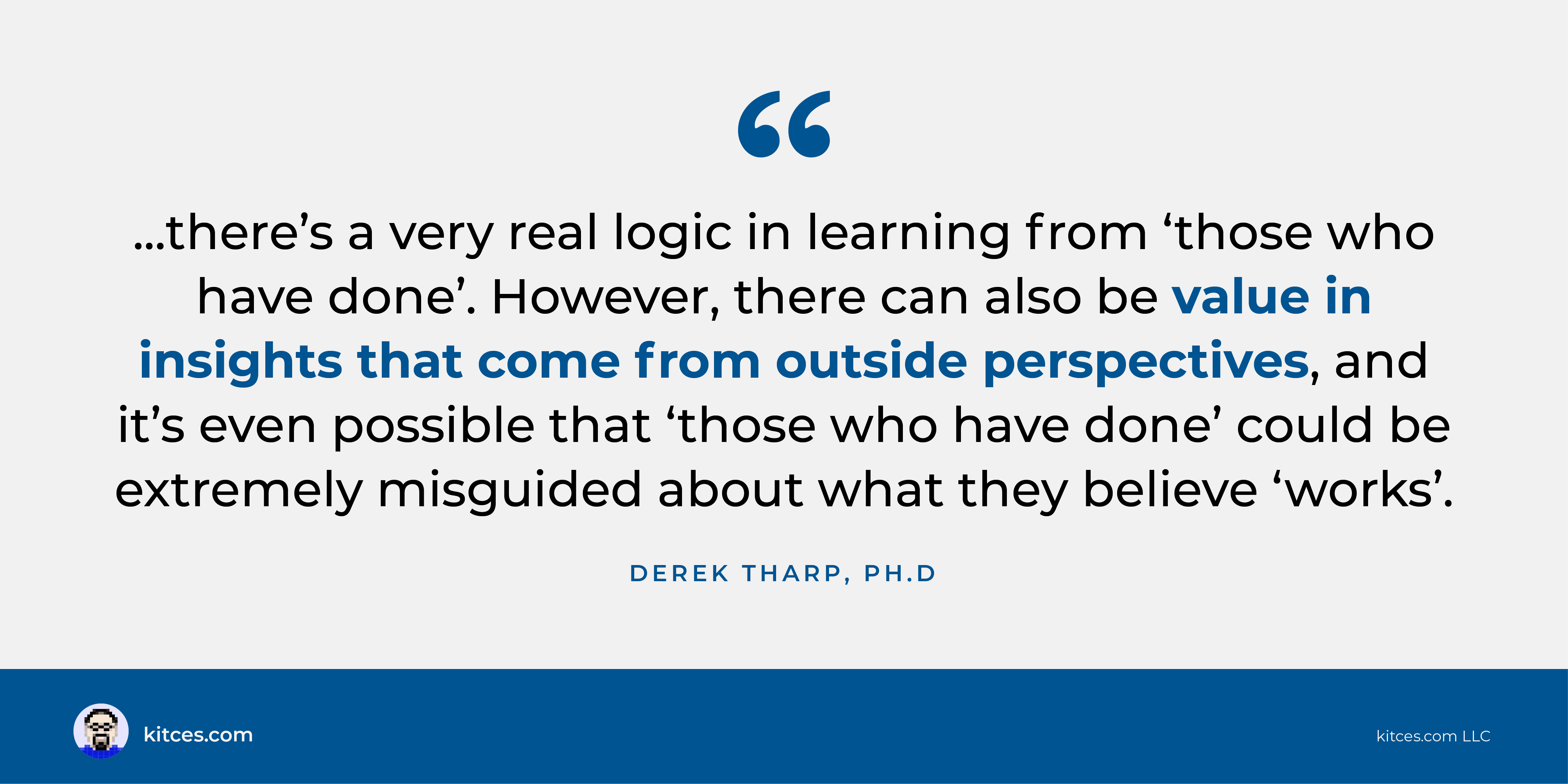As a financial advisor, there are many potential sources of advice on running a practice and serving clients, from fellow advisors to coaches to academic researchers and others. Sometimes, it can be tempting to rely solely on the advice of those with an ‘in-the-trenches’ perspective, as these individuals have actually lived out a similar experience and can appreciate some of the nuanced challenges that an industry outsider might not. For example, in the financial planning context, it can be difficult for those who have not worked with clients to understand the challenges in gathering needed financial data from them. However, there can also be value in insights that come from outside perspectives, and it’s even possible that ‘those who have done’ could be extremely misguided about what they believe works.
The experience of bodybuilders provides an interesting perspective to this dynamic, as they are incentivized to learn as quickly as possible and to do what works to achieve their specific bodybuilding goals. One of the important questions for these athletes is the amount of time they should rest between sets of exercise to promote maximum muscle growth. But while a survey of bodybuilders found that shorter rest periods (30-60 seconds) were considered to be more advantageous for building muscle, academics using randomized control studies determined that longer intervals between sets (3 minutes) actually led to greater muscle growth. This is an example of outside research serving as a useful check on the accepted conventional wisdom among practitioners.
At the same time, while bodybuilders have the benefit of very fast feedback loops (as they can generally see the results of changes to their workout routine very quickly – often within days or weeks) and can typically identify the causal reason for the new results (e.g., changing the amount of rest time between sets), success as a financial advisor is far more multifaceted and subject to lots of random noise that can be misinterpreted in processes with very long feedback loops (since effective business development practices can take months, quarters, or years to provide any real results). For example, if an advisor has a good streak of converting prospects into clients, it could be because of a change they made in their discovery meeting process, or it could just be the result of random noise (e.g., prospects that approached the firm in a given month just happened to be more engaged, while those who approach the firm next month might be less so).
This raises the question for advisors of how to evaluate practice management advice and industry research and which sources of advice to trust. To start, it can be sensible to give greater weight to advice or resources from those who have been in the trenches trying to solve a business issue, though it would be imprudent to cut off the potential to learn from other avenues entirely (e.g., a planning template designed by an outsider but tailored to the needs of a firm’s clients could be more useful than one designed by another planner for a different type of client). And when reviewing academic research, signs advisors can look for to assess the study’s reliability and relevance to their practice include larger sample sizes, participants who are similar to their own clients, and qualified researchers with industry experience.
Ultimately, the key point is that while those with on-the-ground expertise often provide helpful practice management advice, academic researchers and others can also provide valuable perspectives. Because as the example of bodybuilders shows, sometimes commonly accepted wisdom among practitioners can benefit from being challenged by outside research!


